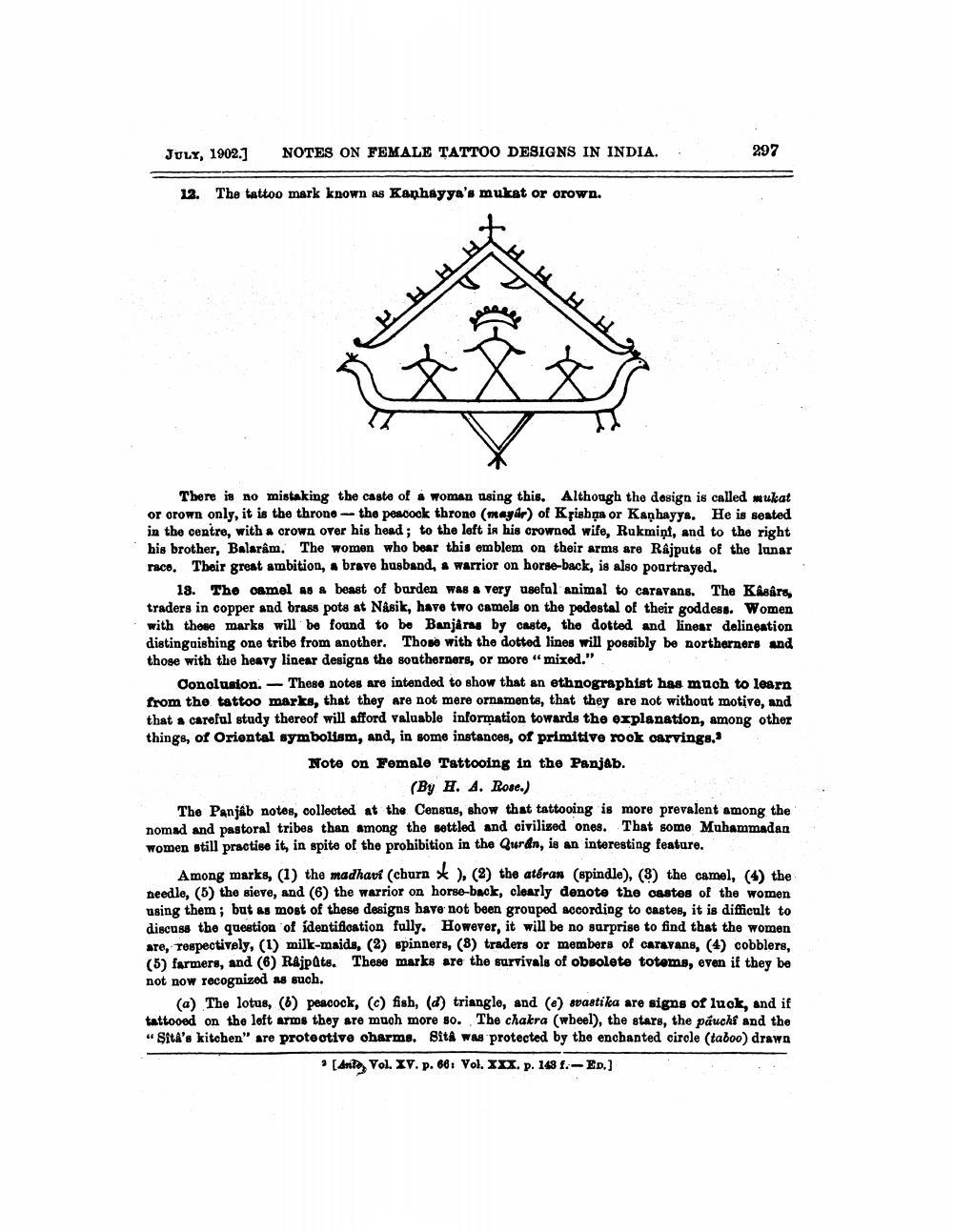________________
JULY, 1902.]
NOTES ON FEMALE TATTOO DESIGNS IN INDIA.
297
12. The tattoo mark known as Kanhayya's mukat or orown.
There is no mistaking the caste of a woman using this. Although the design is called mukat or crown only, it is the throno - the peacock throne (mayar) of Krishna or Kaņhayya. He is seated in the centre, with a crown over his head; to the left in his crowned wife, Rukmiņi, and to the right his brother, Balarâm. The women who bear this emblem on their arms are Rajputs of the lunar raco. Their great ambition, a brave husband, a warrior on horse-back, is also pourtrayed.
18. The oamel as a beast of burden was a very useful animal to caravans. The Kasara, traders in copper and brass pots at Násik, have two camels on the pedestal of their goddess. Women with these marks will be found to be Banjaras by casto, the dotted and linear delineation distinguishing one tribe from another. Those with the dotted lines will possibly be northerners and those with the heavy linear designs the southernors, or more " mixed."
Conclusion. These notes are intended to show that an ethnographist has much to learn from the tattoo marks, that they are not mere ornaments, that they are not without motive, and that a careful study thereof will afford valuable information towards the explanation, among other things, of Oriental symbolism, and, in some instances, of primitive rok carvings,
Note on Female Tattooing in the Panjab.
S (By H. A. Rose.) The Panjáb notes, collected at the Census, show that tattooing is more prevalent among the nomad and pastoral tribes than among the settled and civilized ones. That some Muhammadan women still practise it, in spite of the prohibition in the Quran, is an interesting feature.
Among marks, (1) the madhavi (churn * ), (2) the atéran (spindle), (3) the camel, (4) the needle, (6) the sieve, and (6) the warrior on horse-back, clearly denote the castes of the women using them; but as most of these designs have not been grouped according to castes, it is difficult to discuss the question of identification fully. However, it will be no surprise to find that the women are, respectively, (1) milk-maids, (2) spinners, (8) traders or members of caravans, (4) cobblers, (5) farmers, and (6) Rajpats. These marks are the survivals of obsolete totems, even if they be not now recognized as such.
(a) The lotus, (6) peacock, (c) fish, (d) triangle, and (6) svastika are signs of luok, and if tattooed on the left arms they are much more so. The chakra (wbeel), the stars, the páuckf and the “Sita's kitchen" are protective charms. Sita was protected by the enchanted circle (taboo) draws
• (Ante, Vol. IV. p. 66: Vol. XXX. p. 149 f.- ED.)




